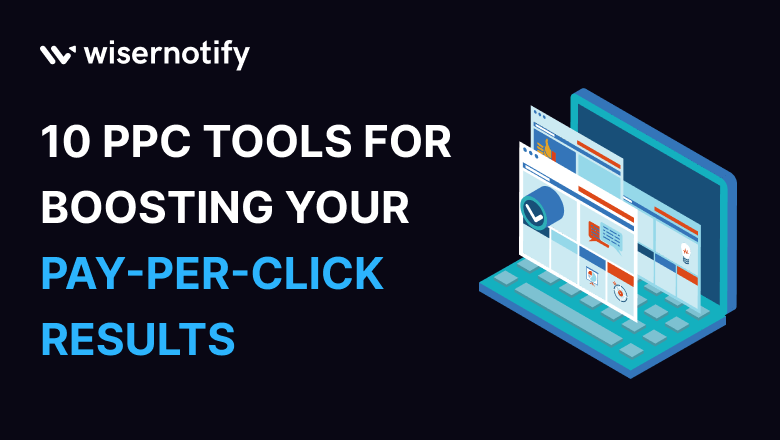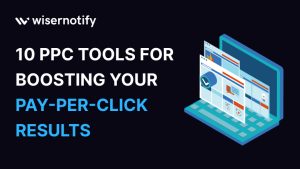If you’re running PPC (Pay-Per-Click) campaigns and trying to get better results from your Google Ads or Bing Ads, the tools you use can make or break your success.
Whether you’re managing multiple campaigns, tracking ad spend, or looking for keyword suggestions, the right PPC tools help you stay ahead.
From Google Keyword Planner to Google Ads Editor, smart PPC management tools let you dig into keyword data, manage your ad groups, improve your ad copy, and boost your campaign performance.
In this guide, we’ve rounded up 11 of the best tools to improve your PPC advertising—so you can get more clicks, better website traffic, and real results from your paid search efforts.
Let’s get started!
Why PPC Tools are Important for Businesses?
If you’re running Google Ads campaigns or working with paid search, the right PPC tools aren’t just helpful—they’re essential.
Managing multiple campaigns, tracking your ad spend, and finding the right keywords takes time. Without the right tools, it’s easy to waste a budget and miss out on clicks that actually convert.
Here’s why smart businesses use PPC software:
Better Keyword Research: Tools like Google Keyword Planner or Keyword Magic Tool help you find relevant keywords, spot trends in search volume, and pick phrases your target audience is actually searching for.
Smarter Campaign Management: From ad groups to bidding strategies, PPC tools help you organize your Google ad campaigns or Microsoft ads more effectively. You can manage multiple accounts without losing track.
Faster Optimization: You don’t have time to manually adjust every part of your campaign. With the right PPC management tools, you can test ad copy, find negative keywords, and tweak landing pages based on real-time results.
Track What Works: Whether it’s through Google Analytics or a more advanced platform, tracking campaign performance and key performance metrics helps you avoid guesswork and focus on what’s driving website traffic.
Stay Ahead of Competitors: With good competitor research, you can see what others are doing with their PPC advertising—and do it better.
Top 11 PPC Tools to Maximize Clicks and Conversions
If you’re running paid ads, these top PPC tools can help you get better results without wasting your budget.
1. Google Ads
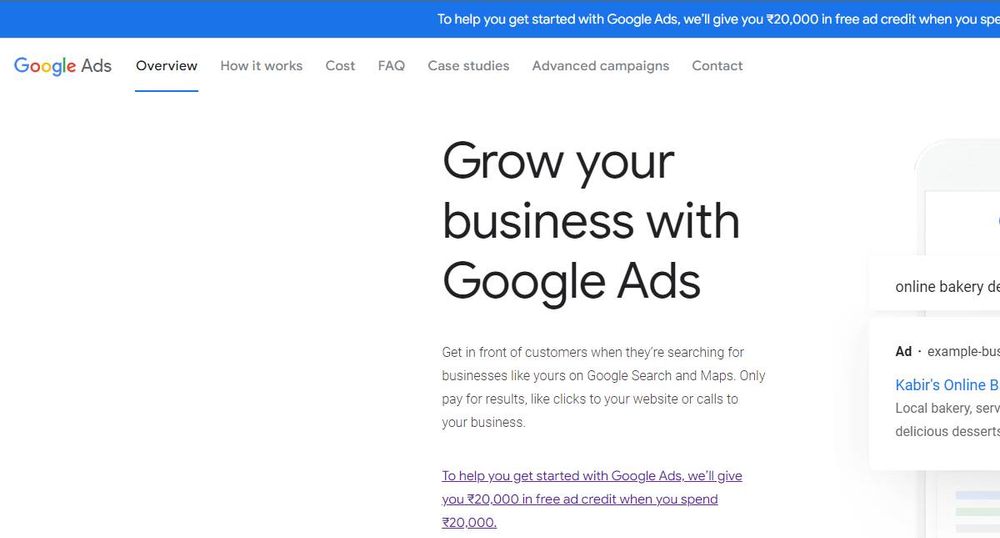
Google Ads is the most widely used PPC platform, allowing advertisers to display ads on Google Search, YouTube, and the Google Display Network.
It’s ideal for businesses of all sizes looking to target users based on search intent, location, behavior, and more.
Key Features:
- Keyword and audience targeting
- Smart bidding strategies
- Ad extensions
- Performance tracking and reporting
- Integration with Google Analytics
Pros
- ✓Massive reach via Google Search and Display
- ✓Advanced targeting options
- ✓AI-powered smart bidding and recommendations
- ✓Detailed performance insights
Cons
- −The steep learning curve for beginners
- −It can get expensive without proper management
- −Competitive industries drive up CPCs
Rating: ⭐ 4.7/5
2. Shape
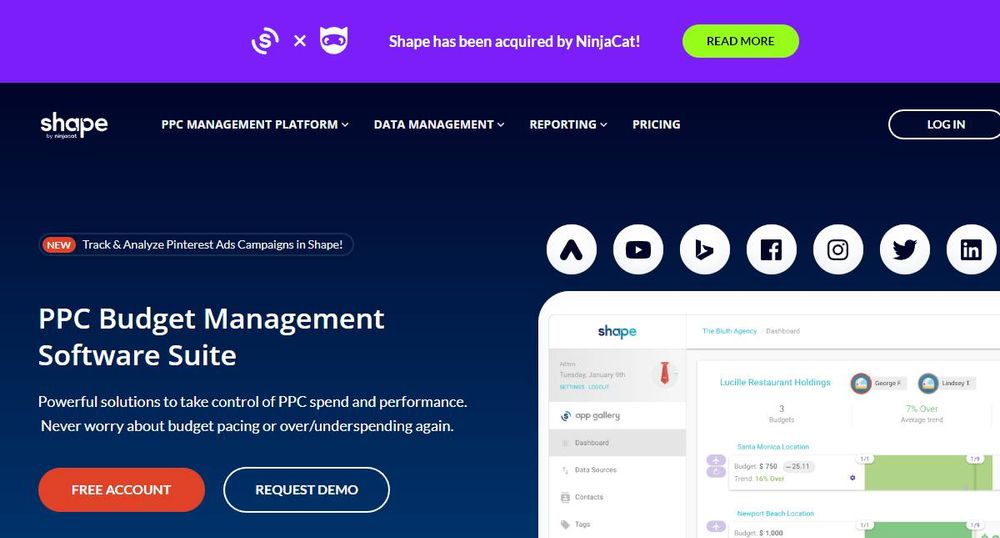
Shape is a PPC budget management tool designed to help you stay in control of your ad spend.
Whether you’re managing a few campaigns or dozens across different platforms, Shape helps you track and pace budgets without the stress of manual checks.
Key Features:
- Real-time budget tracking
- Automated spend pacing
- Works with Google Ads, Microsoft Ads, and more
- Custom budget rules for campaigns and clients
- Integrates with Slack and Google Sheets
Pros
- ✓Help avoid going over budget
- ✓Saves time by automating routine budget tasks
- ✓Great for teams managing multiple clients
- ✓Easy-to-read dashboards for quick updates
Cons
- −Doesn’t offer ad or keyword optimization
- −Takes a bit to learn the automation features
- −Interface isn’t the smoothest
Rating: ⭐ 4.4/5
3. MarketingCloudFX
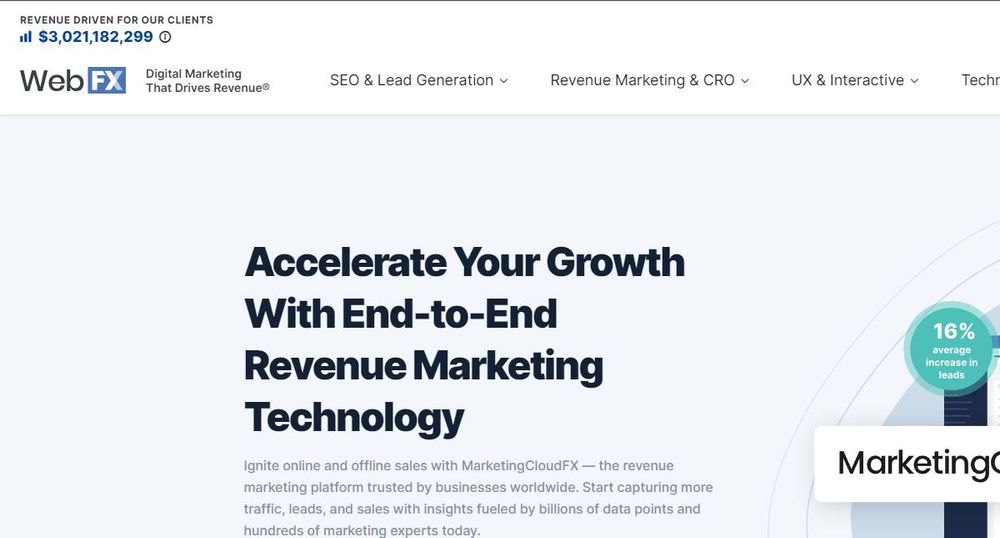
MarketingCloudFX is a PPC and digital marketing platform built by WebFX. It uses AI and automation to help you get better results from your ad campaigns.
It’s made for businesses that want to track leads, improve ROI, and run smarter, data-driven campaigns.
Key Features:
- AI tools to improve PPC performance
- Call tracking and lead attribution
- Competitor ad tracking
- Custom dashboards and reports
- CRM integration
Pros
- ✓Brings PPC, SEO, and CRO together in one system
- ✓Tracks where your leads come from and how they convert
- ✓Strong automation features
- ✓Great for businesses with larger ad budgets
Cons
- −It can be overkill for small businesses
- −Pricing isn’t clear unless you’re using WebFX services
Rating: ⭐ 4.5/5
4. Yandex Direct
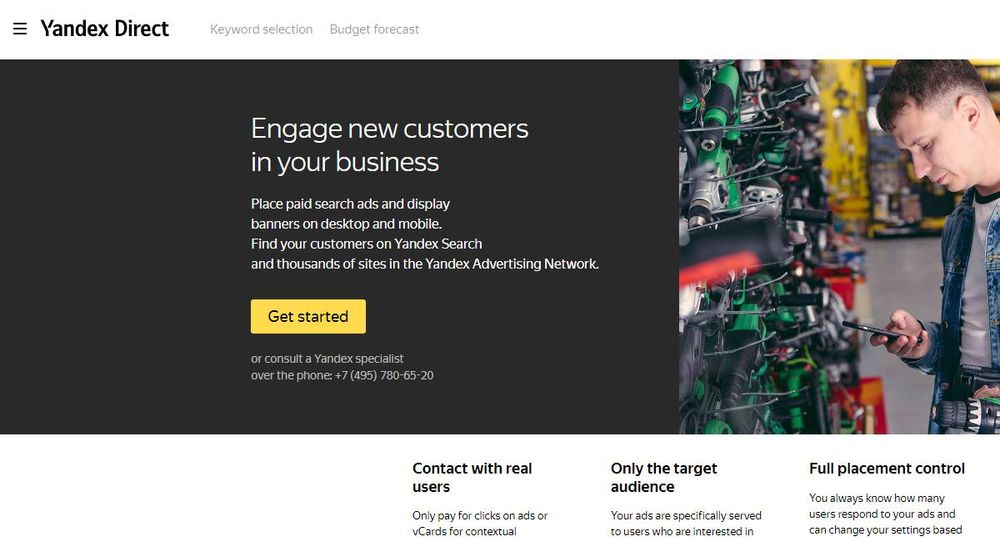
Yandex Direct is the go-to PPC platform for advertising in Russia and nearby countries. It works a lot like Google Ads but is built specifically for the Russian market, making it a strong option if you’re targeting that region.
Key Features:
- Keyword targeting with smart suggestions
- Retargeting and location-based ads
- Dynamic ads and product feed support
- Built-in analytics through Yandex.Metrica
- Smart bidding and budget control tools
Pros
- ✓Great for reaching Russian-speaking users
- ✓Strong regional and language targeting
- ✓Usually, cheaper clicks than Google Ads in the same market
- ✓Solid built-in analytics
Cons
- −Not beginner-friendly if you don’t speak Russian
- −Doesn’t work well for global campaigns
- −Fewer third-party tool integrations
Rating: ⭐ 4.1/5
5. Optmyzr
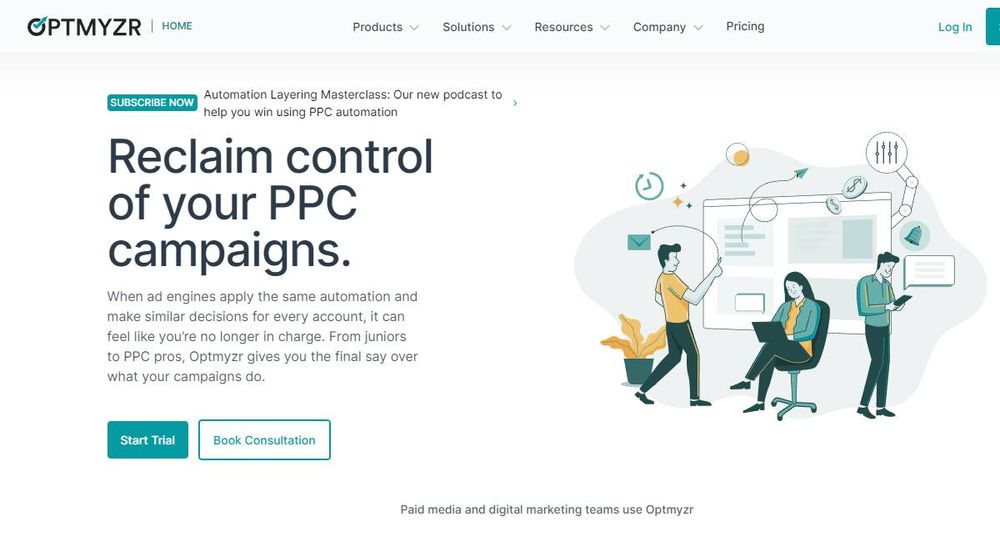
Optmyzr is a PPC management and automation tool designed to help marketers optimize campaigns more efficiently across platforms like Google Ads, Microsoft Ads, and Amazon.
It’s built for agencies and in-house teams looking to scale their PPC performance with less manual effort.
Key Features:
- One-click optimizations
- Automated rule-based bidding
- Custom reporting and alerts
- Campaign builder and budget tracking
- PPC audits and scripts for advanced users
Pros
- ✓Saves significant time with automation
- ✓Highly customizable for different campaign needs
- ✓Great for multi-account management
- ✓Strong reporting features with white-label options
Cons
- −It can be overwhelming for beginners
- −Pricier than some alternatives
- −Interface has a learning curve
Rating: ⭐ 4.6/5
6. Acquisio
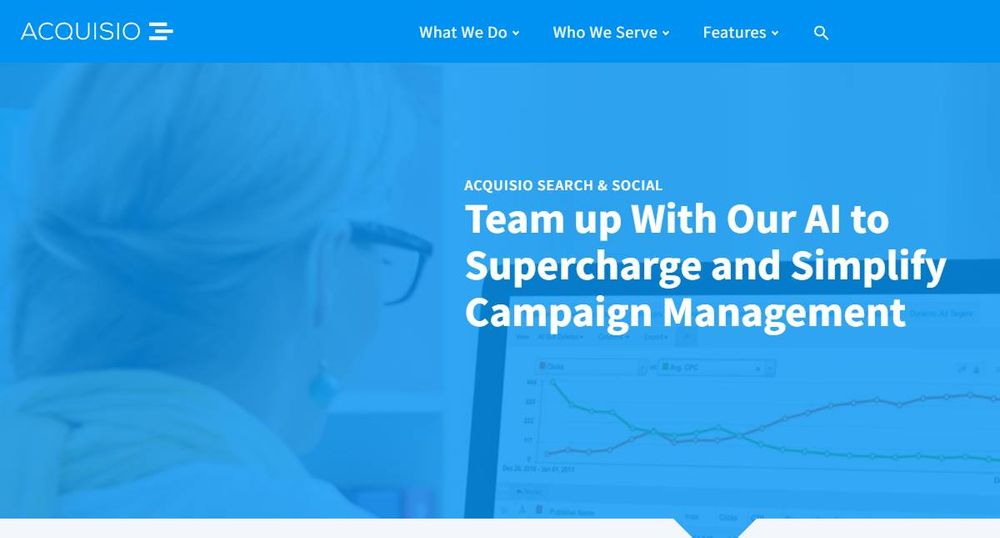
Acquisio is a performance media solution that helps marketers manage and optimize pay-per-click campaigns across platforms like Google, Bing, and Facebook.
Designed for agencies and large advertisers, it automates bid and budget management using machine learning to boost efficiency and ROI.
Key Features:
- Automated bid and budget management (BBM)
- Cross-channel campaign tracking
- White-label reporting for agencies
- Integration with Google Ads, Bing Ads, Facebook, and more
Pros
- ✓Strong automation for large-scale campaigns
- ✓Saves time on manual bid adjustments
- ✓Great for multi-platform management
- ✓Robust reporting tools
Cons
- −Dated user interface
- −It can be complex for beginners
- −Limited customization in some reports
Rating: ⭐️4/5
7. Unbounce
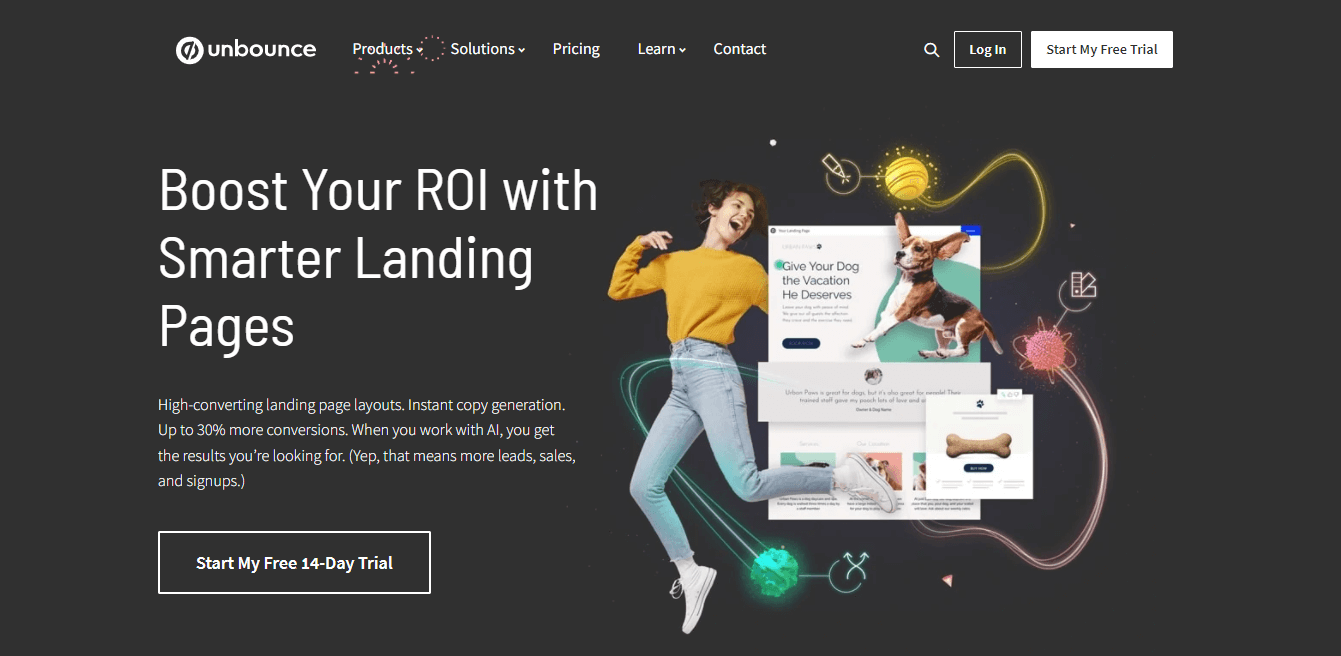
Unbounce is a popular tool for creating landing pages that actually convert. It’s built for marketers who want to get better results from their PPC campaigns without waiting on developers.
With its easy drag-and-drop editor and smart features, you can quickly build, test, and tweak pages to match your ads and boost conversions.
Key Features:
- Simple drag-and-drop page builder
- AI-powered copywriting and traffic optimization
- Built-in A/B testing
- Popups and sticky bars to capture more leads
Pros
- ✓Super easy to build custom landing pages
- ✓AI helps improve results automatically
- ✓Works well with Google Ads, HubSpot, and other tools
- ✓Great for quickly testing different versions of a page
Cons
- −Pricing can be high if you’re just starting out
- −Some features take time to learn
- −Fewer templates compared to other platforms
Rating: ⭐ 4.4/5
Build trust & FOMO
Highlight real-time activities like reviews, sales & sign-ups.
8. Adalysis
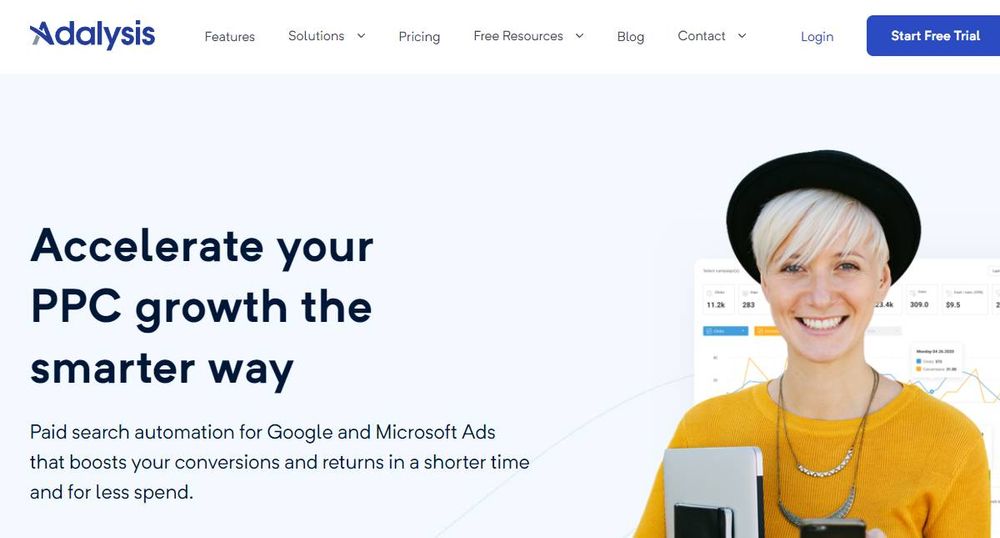
Adalysis is a PPC management and optimization platform built specifically for Google Ads and Microsoft Ads.
It’s designed to streamline campaign analysis, automate routine tasks, and surface actionable insights that help advertisers improve performance efficiently.
Key Features:
- Automated A/B ad testing
- Customizable performance alerts
- Account auditing and health check tools
- Quality Score tracking and recommendations
- Bulk campaign management
Pros
- ✓Saves time by automating manual tasks
- ✓Offers deep, actionable insights into ad performance
- ✓Helps maintain consistent ad testing with minimal effort
- ✓Strong alert system that catches issues early
Cons
- −Interface can feel dated
- −It may be too advanced for very small advertisers or beginners
Rating: ⭐ 4.6/5
9. Aihello
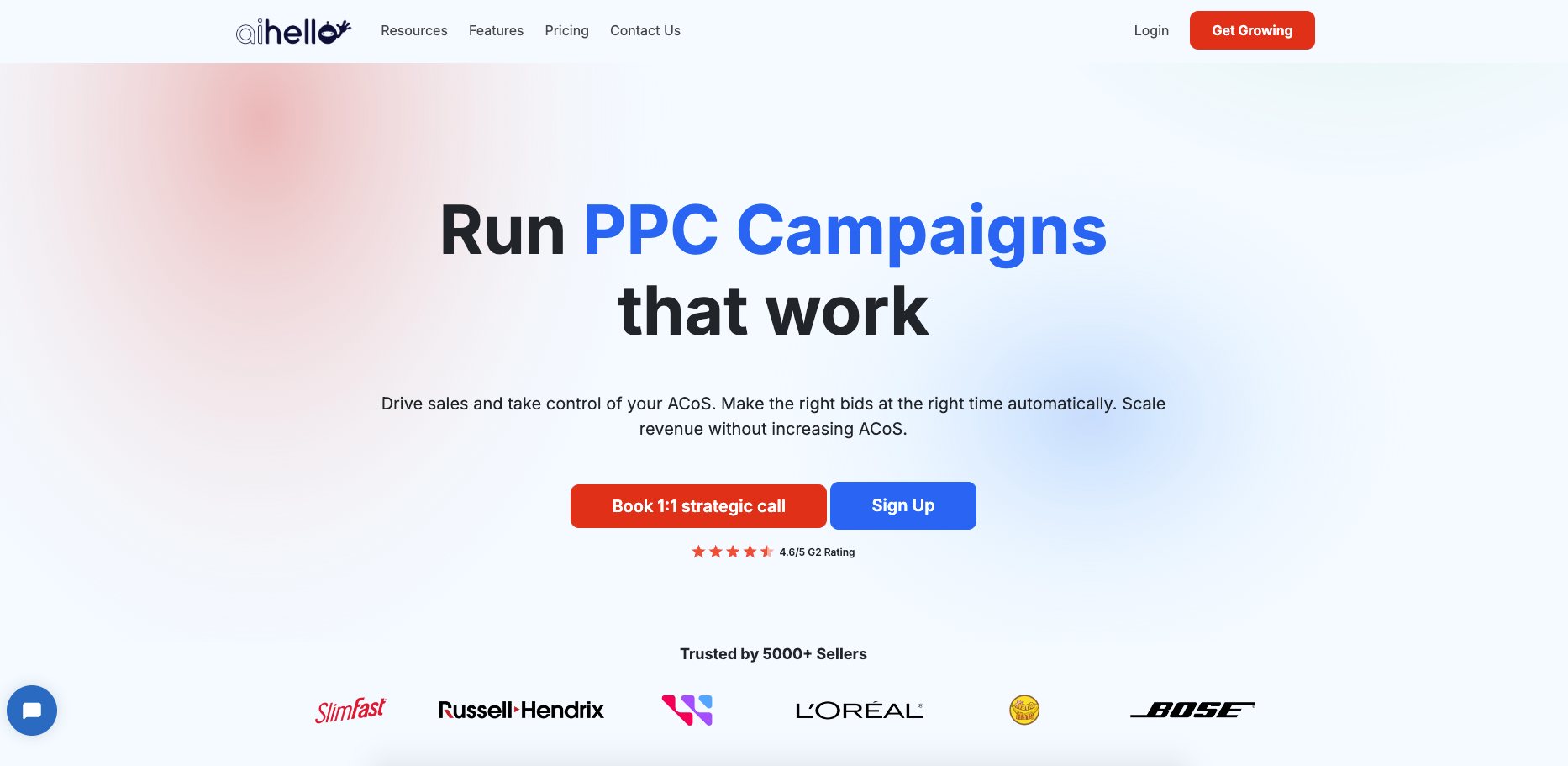
Aihello is a smart PPC tool built for Amazon sellers. It uses AI to automate ad campaigns, helping you spend less time managing ads and more time growing your business.
It’s especially useful for sellers who want better results without digging into the nitty-gritty every day.
Key Features:
- Automatic bid adjustments
- AI-powered keyword targeting
- Easy campaign setup and scaling
- Real-time performance tracking
Pros
- ✓Saves a lot of time with automation
- ✓Gets better over time as it learns
- ✓Helps lower ACoS and boost ROI
- ✓Simple setup, beginner-friendly
Cons
- −Only supports Amazon ads
- −It is not ideal if you want deep manual control
- −It can be pricey for smaller sellers
Rating: ⭐ 4.4/5
10. PPC Entourage
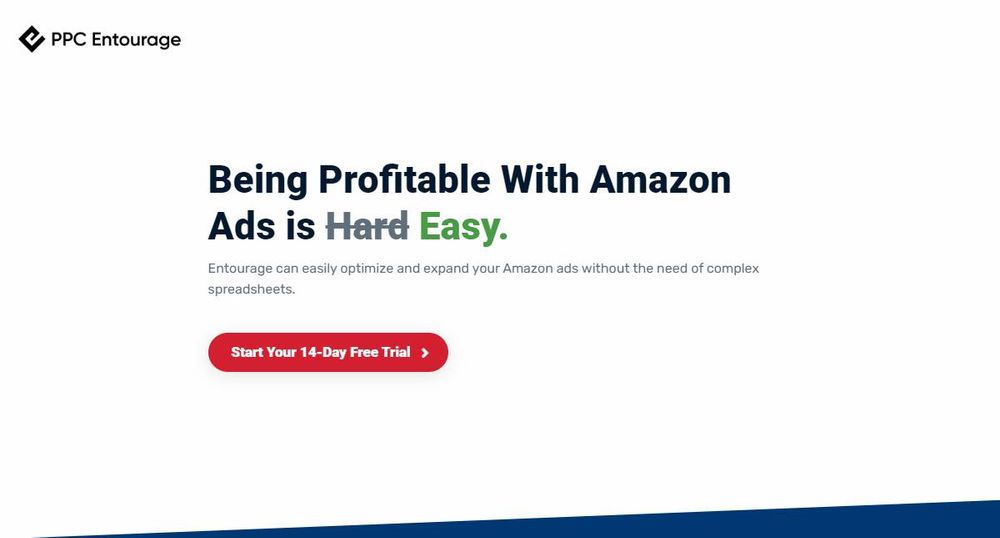
PPC Entourage is a tool made for Amazon sellers who want to get better results from their ads without spending hours managing campaigns.
It helps you set up, track, and improve your Amazon PPC campaigns with less guesswork and more focus on profit.
Key Features:
- Bulk campaign creation and optimization
- Search term expansion and negative keyword automation
- Profit-focused analytics dashboard
- Campaign optimization templates
- Product targeting and ASIN harvesting
Pros
- ✓Built specifically for Amazon PPC
- ✓Time-saving automation tools
- ✓Easy to set up and navigate
- ✓Strong profit tracking capabilities
Cons
- −Only works with Amazon Ads
- −Pricing may be high for small sellers
- −Limited to U.S. and select marketplaces
Rating:: ⭐ 4.2/5
11. Adsbot
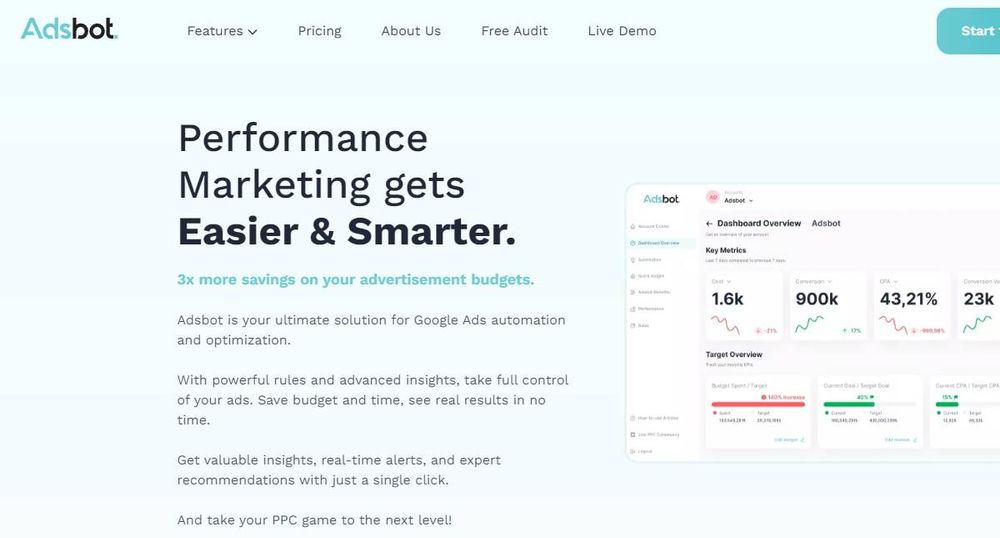
Adsbot is an AI-powered PPC automation tool designed to streamline and optimize Google Ads campaigns.
It’s built for marketers who want to monitor performance, get instant alerts, and automate routine tasks without digging through endless dashboards.
Key Features:
- Real-time monitoring and alerts
- Budget pacing and anomaly detection
- Automated performance reports
- AI-driven optimization suggestions
- Account audit tools
Pros
- ✓Saves time with smart automation
- ✓Easy-to-use interface
- ✓Instant alerts prevent overspending
- ✓Helpful insights without manual analysis
Cons
- −Limited to Google Ads
- −It may not be ideal for very small budgets
Rating: ⭐ 4.4/5
How to Choose the Best PPC Tool for Your Business
Choosing the right PPC tool can make your pay-per-click results. With so many options out there, it’s important to find one that fits your goals, budget, and workflow. Here’s what to look for:
➲ Know What You Want to Improve
Before picking a tool, think about what you want to fix or improve. Is it better keyword research, smoother campaign management, or lowering your ad spend? Your PPC tool should support your overall PPC strategy—whether that’s growing website traffic, improving ad copy, or managing multiple campaigns.
➲ Make Sure It Works with the Platforms You Use
Some tools are built for Google Ads campaigns, others for Bing Ads or Microsoft Ads. If you’re running ads across several PPC platforms, you’ll want a tool that can manage everything in one place.
Also check if it supports Google Ads Editor or can connect to your Google Analytics account.
➲ Look for Essential Features
You don’t need every feature under the sun. Focus on tools that help you with the basics like:
- Finding relevant keywords with a solid keyword research tool
- Managing ad groups and bidding strategies
- Tracking campaign performance and performance metrics
- Handling negative keywords to stop wasting budget
If you’re into competitor research or landing page optimization, look for that too. Just don’t overpay for stuff you won’t use.
➲ Think About Ease of Use
Your PPC software should be simple enough for your team to actually use it. A clean dashboard, clear reports, and solid PPC management features can save you time and stress—especially when running multiple accounts or local PPC campaigns.
➲ Check for Integrations
The best PPC management tools connect easily with what you already use—like Google Keyword Planner, Google Trends, your Google Ads account, or your CRM. This helps keep your digital marketing efforts organized and efficient.
➲ Match It with Your Budget
Your ad budget matters. Some of the best PPC software comes with a cost, but there are also solid free tools that work well, especially for smaller businesses or newer PPC campaigns.
➲ Support Matters
If something breaks or you need help, good support is a big plus. Look for tools with live chat, helpful guides, or fast customer service—especially if you’re managing a lot of Google ad campaigns or running a team.
Some Common Mistakes to Avoid When Using PPC Tools
Even the best PPC tools can’t deliver results if they’re used the wrong way. Here are some common missteps to avoid:
✖ Not using negative keywords to block irrelevant searches
✖ Relying on just one keyword research tool like Google Keyword Planner
✖ Not connecting Google Analytics to your Google Ads account
✖ Creating too many ad groups without a clear structure
✖ Setting up PPC campaigns and not checking them regularly
✖ Ignoring landing page optimization for better conversions
✖ Skipping search terms reports in Google Ads campaigns
✖ Wasting ad budget on broad match keywords without proper filters
Conclusion
Running good PPC campaigns isn’t just about setting up ads—it’s about using the right tools to get better results.
Tools like Google Keyword Planner, Google Ads Editor, and Google Analytics help you find the right keywords, manage your budget, and track what’s working.
Whether you’re running Google Ads, Microsoft Ads, or Bing Ads, smart PPC tools make it easier to improve ad copy, pick better keywords, and get more from your ad spend. They help you plan, test, and grow.
Start simple. Use the tools that fit your goals. Watch your campaign performance, tweak your ads, and keep reaching the right people.
